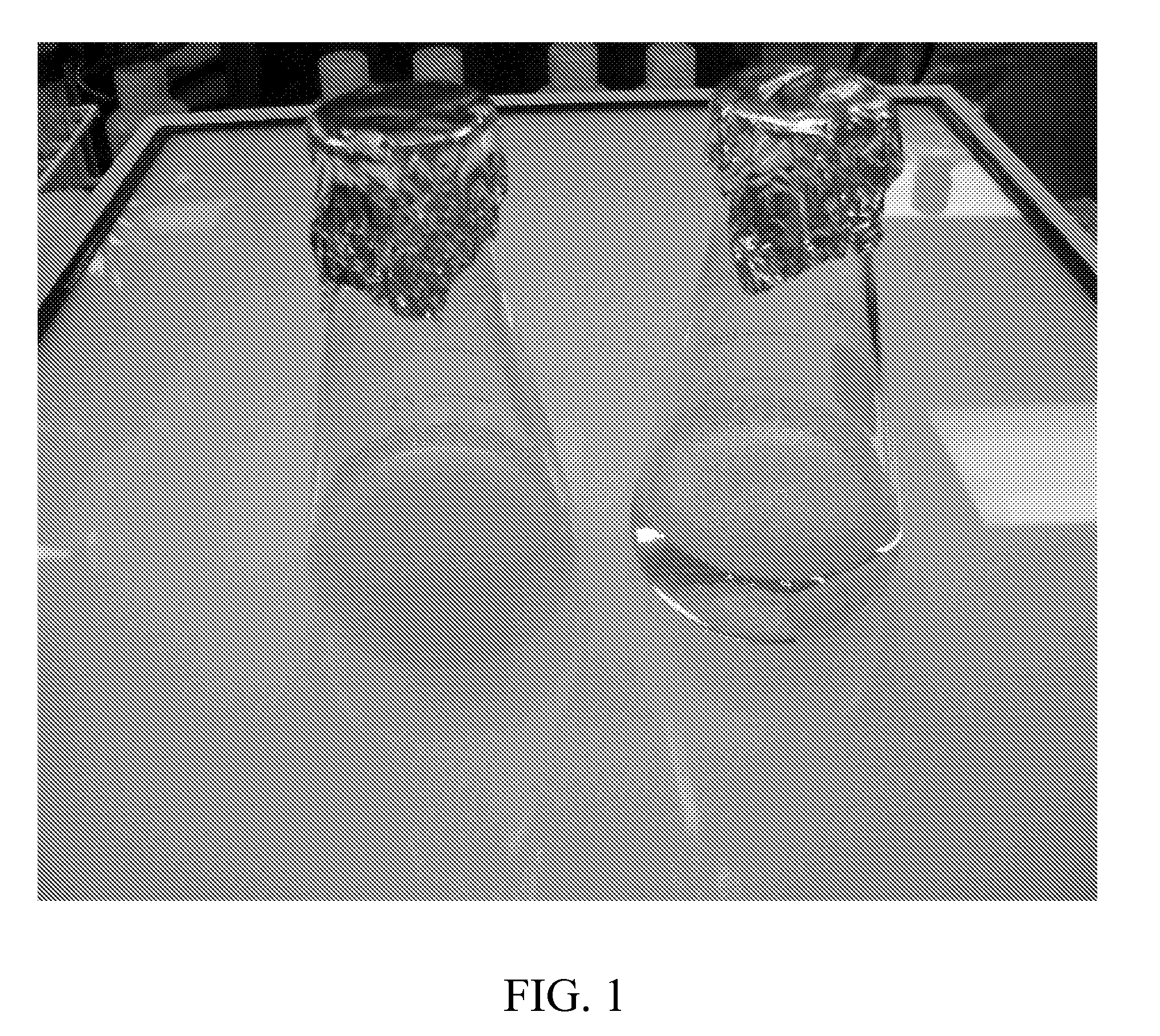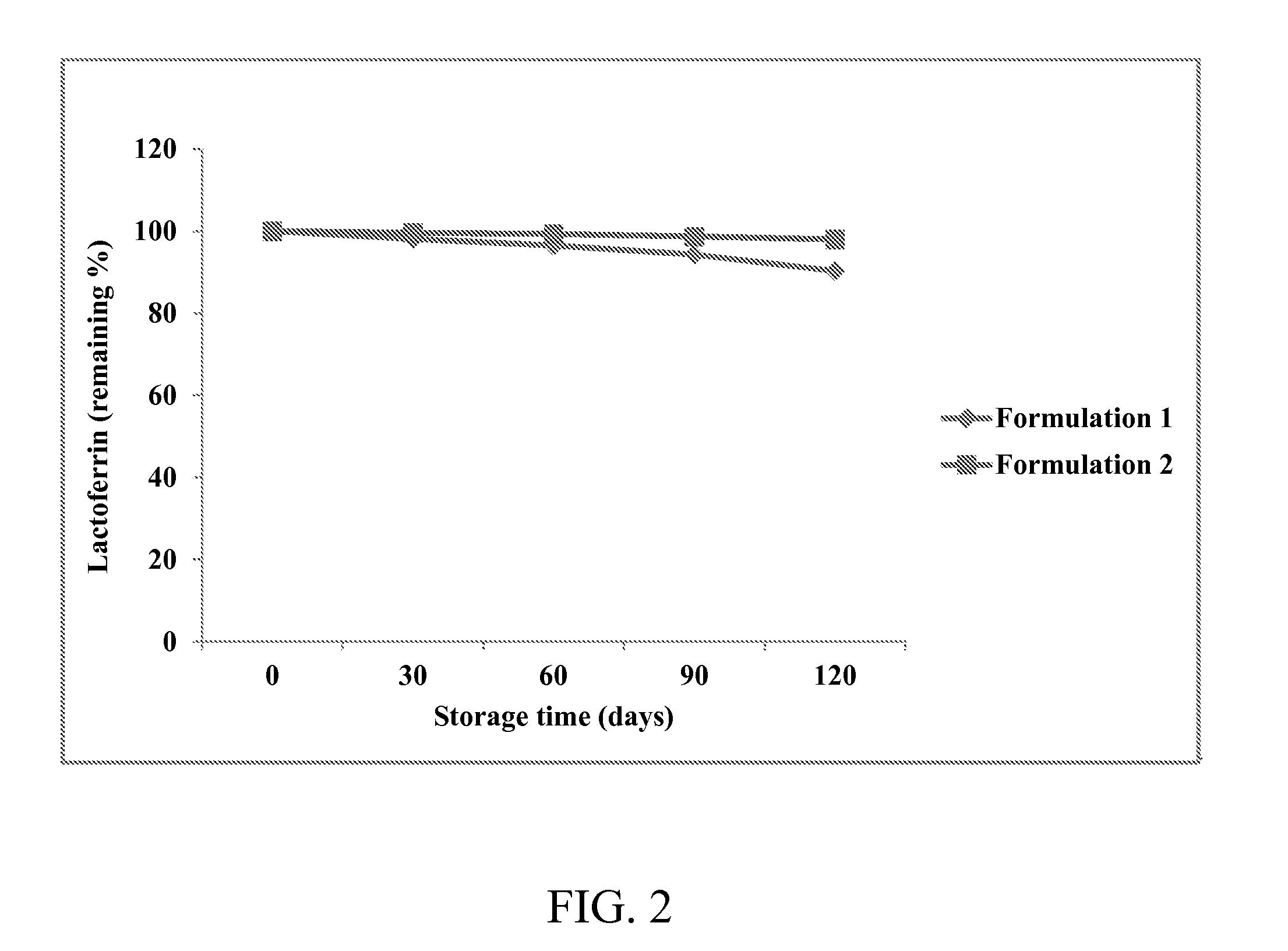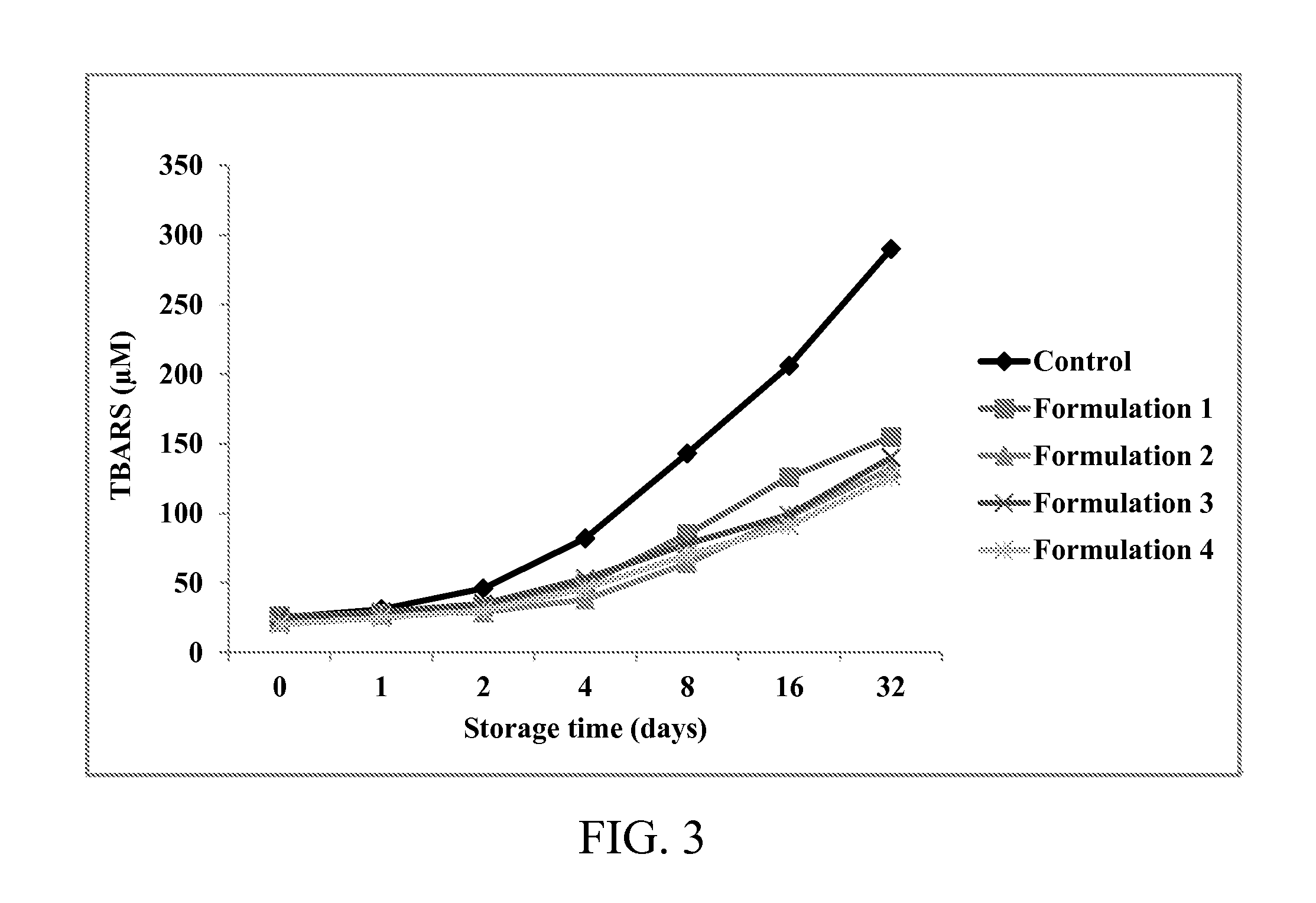Compositions for targeted Anti-aging therapy
a technology of compositions and anti-aging drugs, applied in the direction of drug compositions, food ingredients as antioxidants, peptide/protein ingredients, etc., can solve the problems of reducing physical performance in humans, affecting cell and tissue health, so as to reduce the allergenicity of proteins, block allergic reactions, and improve the stability of heat and storage of glycoprotein lactoferrin particles.
- Summary
- Abstract
- Description
- Claims
- Application Information
AI Technical Summary
Benefits of technology
Problems solved by technology
Method used
Image
Examples
example 1
Preparation of Heat-Stabilized Lactoferrin
[0275]The heat-stabilized lactoferrin of the present invention is prepared as follows: bovine lactoferrin (0.1 grams) is added to 100 ml of a buffered solution (10 mM potassium acetate, pH 6.3) and allowed to dissolve by stirring at low speed. To the buffered solution containing bovine lactoferrin, a small amount of zinc lactate (0.01 grams) is added, followed by stirring at low speed for few minutes. It should be noted here that the bovine lactoferrin sample needs to be exposed to air in the presence of zinc ions. The carbon dioxide (CO2) from the air is converted to bicarbonate ions so that it can participate in the reaction. Bicarbonate is required for the ligation of zinc ions to bovine lactoferrin. The branched-chain amino acids L-leucine, L-isoleucine, and L-valine at a 2:1:1 ratio (0.2 grams) may be alternatively used in combination with zinc lactate to stop heat-induced degradation of lactoferrin, which is responsible for the loss of...
example 2
Radial Immunodifusion Quantitation of Heat-Stabilized Lactoferrin
[0277]Quantitative analysis of the two carbonated formulations containing the heat-stabilized lactoferrin prepared as in Example 1 was performed by a Single Radial Immunodifusion (SRID) kit (Cardiotech Services, Louisville, Ky., USA). No extraction process was required because the kit is especially designed to measure bovine lactoferrin. Potassium acetate-buffered solutions (10 mM, pH 6.3) containing the zinc-saturated lactoferrin (1 mg / ml) were diluted 1:2 with double deionized water in order to be in the concentration range of the kit (250 to 1000 μg / ml). Five μl of the diluted sample was accurately and carefully pipetted into the sampling well of the immunodifusion gel plate. The plate was covered and kept in a desiccator over water that was placed in a 37° C. incubator for 48 hours. The heat-stabilized lactoferrin of Example 1 diffuses through the gel while reacting with bovine lactoferrin antibodies, thus produc...
example 3
Storage Stability of Heat-Stabilized Lactoferrin
[0279]To test the storage stability of the formulations containing the heat-stabilized lactoferrin prepared as in Example 1, one ml of Formulation 1 or Formulation 2 was transferred to a 1.5-ml centrifuge tube and centrifuged at 3000 rpm for 10 min. Sampling was conducted over storage time at 21° C. and lactoferrin concentration determined by means of high-pressure liquid chromatography (HPLC) according to methods described by Palmano, K. P. and Elgar, D. F. in J. Chromatogr. 947, 307-311 (2002). Remaining rates of heat-stabilized lactoferrin were calculated according to the following formula:
Remainingrateoflactoferrin(%)=lactoferrinconcentrationafterstoragelactoferrinconcentrationimmediatelyafterpreparation×100
The concentration of heat-stabilized lactoferrin remaining in the supernatant is shown in FIG. 2. As shown in FIG. 2, the two formulations with a zinc ion concentration of 2.4 mg / 100 ml exhibit 90% or higher of the remaining rat...
PUM
| Property | Measurement | Unit |
|---|---|---|
| Temperature | aaaaa | aaaaa |
| Temperature | aaaaa | aaaaa |
| Time | aaaaa | aaaaa |
Abstract
Description
Claims
Application Information
 Login to View More
Login to View More - R&D
- Intellectual Property
- Life Sciences
- Materials
- Tech Scout
- Unparalleled Data Quality
- Higher Quality Content
- 60% Fewer Hallucinations
Browse by: Latest US Patents, China's latest patents, Technical Efficacy Thesaurus, Application Domain, Technology Topic, Popular Technical Reports.
© 2025 PatSnap. All rights reserved.Legal|Privacy policy|Modern Slavery Act Transparency Statement|Sitemap|About US| Contact US: help@patsnap.com



